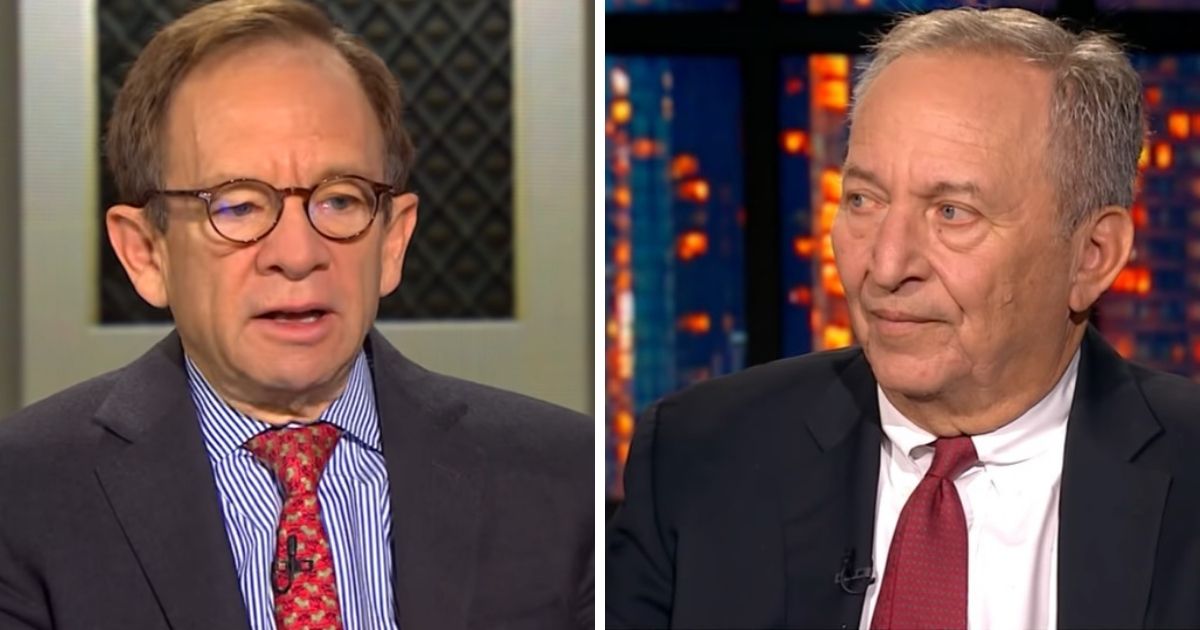Inflation in President Joe Biden’s America is only going to get worse, and Biden’s signature policy isn’t likely to help even if it passes, according to two members of former President Barack Obama’s economic team.
Larry Summers, director of the White House National Economic Council under Obama, and Steven Rattner, who led Obama’s auto industry task force, gave their warnings Friday in an interview on the Bloomberg News show “Wall Street Week.”
Summers, who has been sounding the alarm about inflation for months, said the latest figures pegging inflation at 6.8 percent prove the economic trend isn’t merely “transitory, as the Biden White House has long claimed.
He cited statements by Federal Reserve Chairman Jerome Powell and Treasury Secretary Janet Yellen, who told the House Financial Services Committee Dec. 1, according to The Hill, that inflation has risen higher and laster longer than the administration expected.
[firefly_embed]
[/firefly_embed]
“We’re having it confirmed that it’s not transitory, and I think everybody recognizes now with the statements from Chairman Powell, with the statements from Secretary Yellen, that this isn’t going to just go away of its own accord,” said Summers, who served as treasury secretary at the end of the second Clinton administration. “That the Fed’s going to have to take substantial action to control inflation unless there’s some other kind of adverse development, a crack in markets or something of that kind.
“We’ve put in motion for the first time in 40 years, excessive inflation, caused by overheating of the economy, and that’s going to have to be worked out of the system and that’s probably not going to be such an easy thing,” he said.
Rattner also did not offer any rosy hopes that inflation would be gone within a year.
“I think you have to recognize that it’s a problem that was not created in two months. It’s a problem created over the last two years, and so it’s going to take multiple years, certainly, to work it out,” he said.
Noting that the inflation that stalked the 1970s did not go away easily and without significant negative economic events, Rattner said the battle to curb inflation “is going to be painful. And it’s going to be painful for growth.”
“It’s going to be painful for jobs. And we do have an election coming next year which is going to be complicated,” he said.
Summers said he overall supports the Biden administration’s Build Back Better bill, but made it clear he doesn’t think the bill is going to solve the country’s inflation problem.
In fact, he said, elements of it will likely make it even worse, at least in the short run.
Obama and Clinton economist Larry Summers: Prices will be “higher in 2022 and 2023 with [Biden’s] Build Back Better.” pic.twitter.com/golNm5m7ls
— RNC Research (@RNCResearch) December 11, 2021
“I think the inflation rate would be slightly higher in 2022 and 2023 with the Build Back Better than it would be without the Build Back Better. I think there might be some effects that go the other way, but I think over the next couple of years … it would raise the inflation rate,” Summer said.
“However, I think that is something that could easily be offset, if it chooses to, by the Federal Reserve as it proceeds monetary policy.”
Rattner, who also supports the Build Back Better bill, acknowledged that the massive spending “would add $150 to $200 billion a year to the deficit.”
“That’s not a huge number in a $22 trillion economy, but it’s actually more stimulus.”
Summers said that while elements of inflation are transitory, he said he doubted that the economic picture would right itself without action to tackle inflation head-on.
Summers said a combination of factors not yet reflected in the Consumer Price Index include wage increases that are coming to retain workers, and that these increases will push inflation higher.
The combination of these factors, he said, means that “we’re going to entrench inflation way above 2 percent, perhaps in the 4 percent or even higher range, unless something happens to break the current mood, to break the current trend.”
“And I don’t think it’s going to be three rate increases, or two rate increases, next year,” Summers said.
“I mean, remember this crucially: Monetary policy today is far looser than it was a year ago. Looser as measured by real interest rates; looser as measured by financial conditions; looser as measured by the size of the Federal Reserve’s balance sheet.
“So we’ve got looser monetary policy even as job vacancies are way up and even as inflation is way up as well,” he said.
This article appeared originally on The Western Journal.

























 Continue with Google
Continue with Google